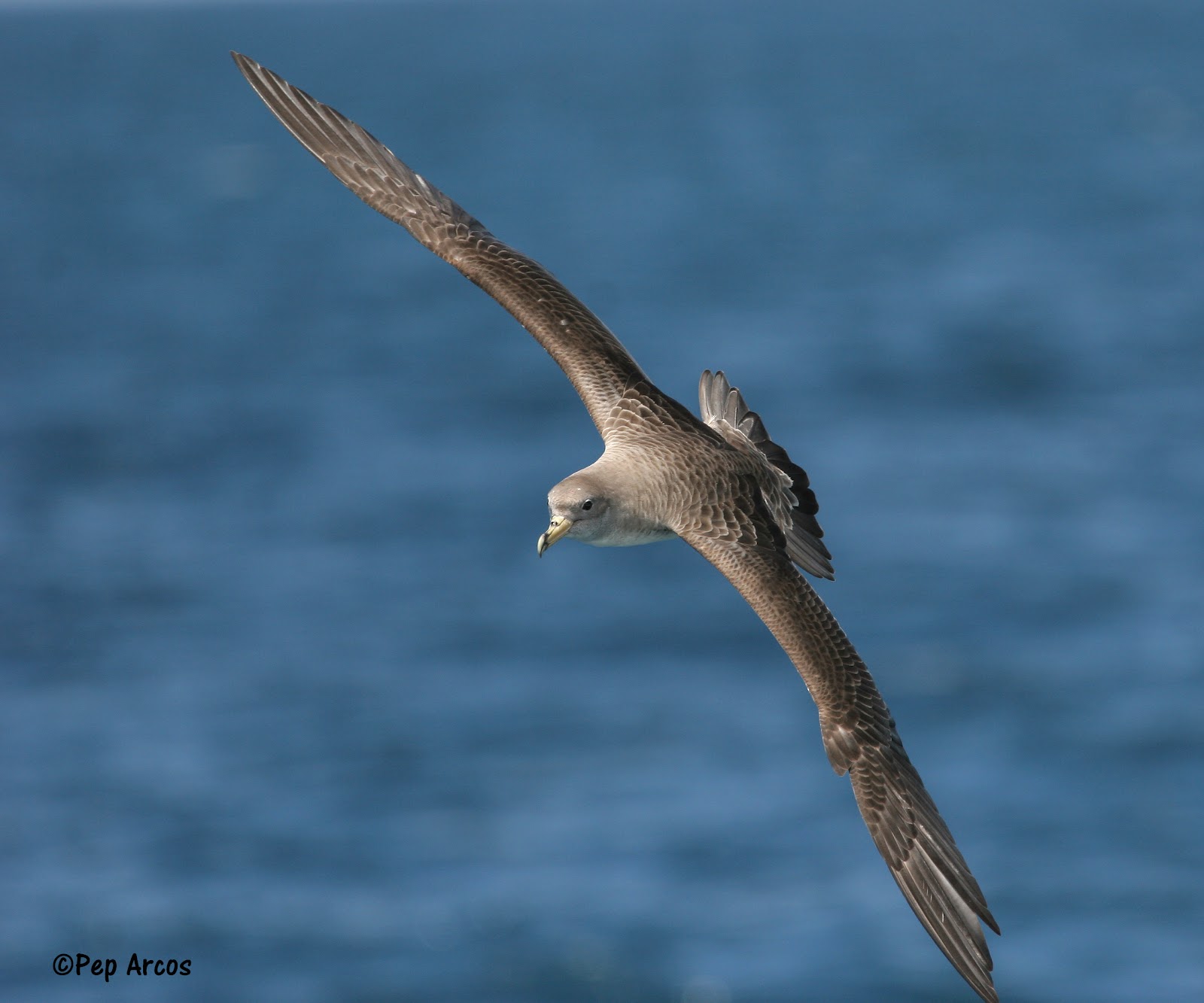
Scopoli's Shearwater, photograph by Pep Arcos
José Manuel Reyes‐González (Institut de Recerca de la Biodiversitat, Universitat de Barcelona, Spain) and colleagues have published in the Journal of Animal Ecology on studying sexual differences in foraging behaviour in Scopoli’s Shearwaters Calonectris diomedea.
The paper’s abstract follows:
- “Sexual segregation in foraging strategies has been little studied in marine species with slight Sexual Size Dimorphism (SSD), particularly regarding the role of environmental conditions and fishery activities. Sexual differences in fishery attendance are of particular concern because uneven mortality associated with bycatch may exacerbate impacts in wildlife populations.
- Using a seabird species with slight SSD, the Scopoli’s shearwater (Calonectris diomedea), we assessed sexual differences in foraging strategies and evaluated whether annual environmental conditions and fishery activity shaped such differences.
- We used a four‐year dataset combining bird GPS tracking, stable isotope analysis, the North Atlantic Oscillation index (NAO, as main proxy of the annual environmental conditions), and fishing vessel positioning data (Vessel Monitoring System, VMS) from the North Western Mediterranean, a region under intense fishery pressure.
- From 2012 to 2015, we tracked 635 foraging trips from 78 individuals. Females showed a greater foraging effort, a lower fishery attendance, a lower trophic level, and a narrower isotopic niche width than males. Moreover, in years with unfavourable environmental conditions, both sexes showed a lower fishery attendance and increased foraging effort compared to the year with most favourable conditions.
- Our results revealed that environmental conditions influence space use, feeding resources, and fishery attendance differently in males and females, overall suggesting competitive exclusion of females by males from main foraging areas and feeding resources, particularly in unfavourable environmental conditions. We highlight the importance of evaluating sexual segregation under disparate environmental conditions, particularly in species with slight SSD, since segregation may pass otherwise unnoticed if only years with similar environmental conditions are considered. The higher fishery attendance of males likely explains the male‐biased bycatch ratio for this species. Thus, inter‐sexual differences in foraging strategies can lead to an unbalanced exposure to relevant threats and have implications for the conservation of long‐lived species.”
Reference:
Reyes‐González, J.M., De Felipe, F., Morera‐Pujol, V., Soriano‐Redondo, A., Navarro‐Herrero, L., Zango, L., García‐Barcelona, S., Ramos, R. & Jacob González‐Solís, J. 2021. Sexual segregation in the foraging behaviour of a slightly dimorphic seabird: influence of the environment and fishery activity. Journal of Animal Ecology doi.org/10.1111/1365-2656.13437.
John Cooper, ACAP Information Officer, 17 February 2021

 English
English  Français
Français  Español
Español